A personal history of video games
I still vividly remember the first time I saw a video game. I was in grade 6 or 7 when the whole class of 40 or so pupils was ushered into the newly built computer lab. We had to take our shoes off before entering the room - purportedly to keep the lab dust free. The only place I had seen with many shoes outside before was a temple. There were some 10-15 computers, mostly PC-XTs, on tables arranged in a U-shape. The machines had no hard disks. Two teachers started at each end of the U and loaded DOS and a game called Bricks on our computers using 51⁄4 inch floppy disks. We sat three to a computer. One person took charge of moving the pedal left, one for moving it right and one for releasing the ball.
Other games I remember from that era:
Alley Cat
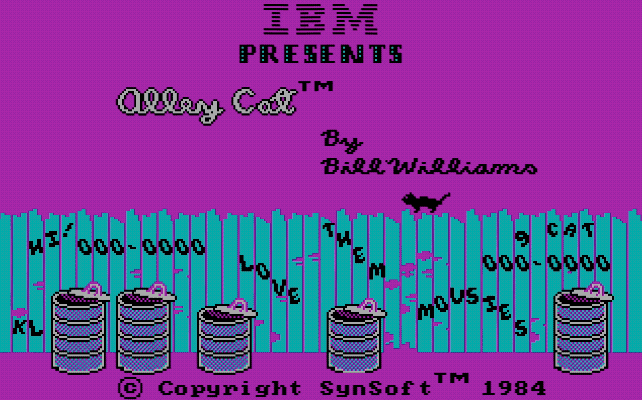 Alley Cat
Alley Cat
Bouncing Babies
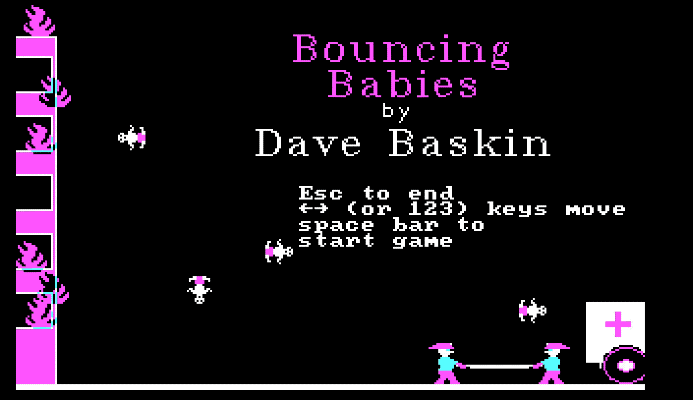 Bouncing Babies
Bouncing Babies
Paratroopers
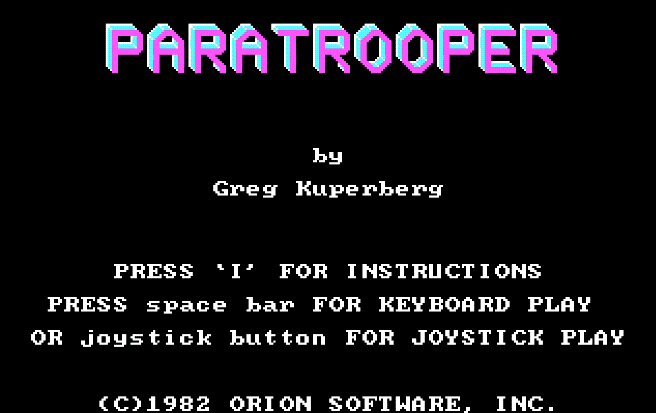 Paratroopers
Paratroopers
All played on the radium-green or ember glow of monochrome monitors.
Most neighbourhoods in Delhi had a video library (or “video parlour” as these establishments were colloquially referred to). India’s middle class was still nascent. Most households didn’t have a colour TV, let alone a video cassette player. So these libraries would lend you not only the movies, but also the video player. You’d stand outside the store, browse through a catalog of usually handwritten pages bound in a file or a notebook, see if they still had a player available for rent, and ask them to deliver it to your home. It was common to have relatives over for a movie night on Saturday. The guys (always two, one to drive the scooter the other to hold the video player) from the video library would come in at the designated time, install the video player and leave1. They’d come back in the morning to collect the player, video cassettes and their payment.
As the middle class grew in affluence, colour TVs and video cassette players found their way into Indian homes2. The video libraries still rented the video players, but it was now mostly a video cassette lending business. Even the local grocery stores would try to supplement their income by keeping a small stock of popular films. One of these enterprising neighbourhood video libraries got hold of an Atari console and hooked it up to a TV inside their shop. For a mere 50 paise, you could go in, sit on a chair and play a game till your video game character used up all its lives. At night, they’d rent the console out for a princely sum of 15 Rupees.
I didn’t have a religious upbringing but on the nights we’d rent the console, I’d be praying hard to a favourite God or two from the Hindu pantheon to prevent power cuts3. The console would have two controls so my sister and I would play against each other for games that’s allow it - like Boxing, or take turns for games that wouldn’t - like River Raid.
My mom would briefly join us, but was usually more content to watch us play. Dad would be mostly unimpressed about the whole affair and would just retire to bed as usual. We weren’t allowed to stay up past 1:00 AM. Waking up early is looked at as being more virtuous in Indian culture than staying up late. I’d set an alarm for 5:00 AM, get up, brush my teeth and play till the duo from the video library would show up to collect their wares.
I still remember that Atari cartridges had physical switches (jumpers?) that you’d toggle to change the game. The instructions were sparse and there was no Internet to guide you, but most games were simple and you’d figure them out by trial and error. Some games that I still remember:
Boxing (and the top-down view of the boxers!)
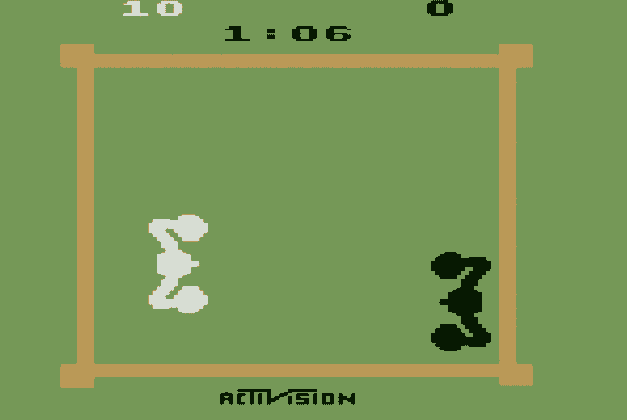 Boxing
Boxing
River Raid
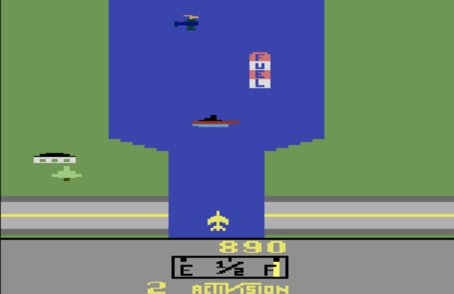 River Raid
River Raid
Frogger
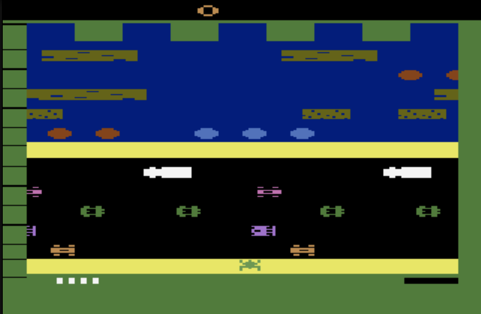 Frogger
Frogger
Eventually the video libraries graduated to the Nintendo console. Coming from Atari this was a much more colourful and intricate world. It was like watching an animation film and being in control of it. At 30 Rupees for a night, it was also twice as expensive to rent as the Atari console. In the beginning, a cartridge had just one game. I remember the cartridges as being bigger and heavier. I remember how warm they’d be when they’d come out of the console. But most of all, I remember how sore my thumbs would be the next day from all the jabbing at the buttons of the controllers. The first time we rented one, we got two cartridges: Mario Brothers and Contra. We must’ve played Mario 75% of the time4.
This was the time when the first video game arcades with coin operated machines started springing up in our neighbourhood. My Dad took me to one where I was more than happy to watch other kids play. Kung-Fu Master and Zippy Race were a favourite for many days.
We’d still occasionally rent the Nintendo console from the video library. Other than the next versions of Mario and Contra, the fare now included a multi-game cartridge with on-screen game selection. Excite Bike and Circus were our favourite from this time. The consoles, like video players before them, eventually became affordable. The arcades started to wind down. My parents were (rightfully) concerned about time spent in front of the TV and our studies suffering, so even if we could afford it, we never got one.
At least one make-shift arcade in our neighbourhood (a dingy little room above a radio repair shop accessed by a narrow staircase) laboured on. During school summer vacation, I’d be allowed a small allowance to spend on playing video games and I’d spend practically all of it on Adventure Island.
By this time, most kids had mastered the games and could finish them without their on-screen character losing lives. Arcades like this one, had to install timer circuits. For 50 paise, you could play for 10 minutes. If you lost your lives before the time, the game ended as usual, but if you did not, you’d need to fork 50 paise for another 10 minute of play.5.
During early 90s, I wasn’t aware of any video game arcades in our neighbourhood. A slightly up-market neighbourhood nearby; which I’d visit to study at a friend’s house, still had one. They had upgraded their machines to SNES so I got to experience the next generation of video game graphics through Street Fighter and Final Fight.
Since about 1995, whatever little gaming I’ve done, I’ve done on a PC (and lately on an iPhone). To write about my favourite games from this time would take a post of its own.
Those days of rented game consoles, and visiting arcades feel so distant that they could’ve been someone else’s life. What got me recounting those days was a recent visit to a Virtual Reality gaming arcade in Amsterdam.
Within a minute of wearing the VR headset, my mind adjusted to the new reality and forgot the world outside. The first demo involved taking an elevator to the top floor of a high-rise and walking on a narrow plank. To accentuate the illusion, the employees at the arcade place a wooden plank in front of you - they needn’t have bothered. When I fell off the edge of the plank, I bent on my knees to brace for the fall. Morpheus’s words from The Matrix had never rung so true before: “Your mind makes it real”6.
There were other games too - perhaps it’d be more appropriate to refer to them as other worlds that my mind momentarily inhabited. In one you’d use a jet pack to fly and douse fires on the roofs of high rises, in another you are an Elf archer, defending your hold against hordes of marauding trolls and orcs. They’d occasionally throw a spear or axe your way, which you’d dodge by moving out of its way. While the games were played with two controller “sticks” - one in each hand - the act of moving your entire body to some end, say to dodge something thrown at you, made the virtual worlds seem all the more real. I ended the session with the VR version of a 2001 game I used to play on PC - Serious Sam. Despite the relatively low quality (by today’s standards) of graphics those worlds had felt utterly real even 17 years ago. To be placed inside the same world more than a decade and a half later felt exhilarating!
I am quite convinced that VR will touch many areas of our future lives. While gaming and entertainment are leading the charge, I now feel that the VR meeting demos we’ve been seeing online will be the next to go mainstream, especially in scenarios where members of your team are spread across different locations. And I can probably not even imagine the applications that the next generation that grows up on VR will dream of.7
What a time to be alive.
Sometimes, if your movie night included a new movie in high demand, they’d even drop by to fast forward the songs. Songs in Bollywood movies can be 5-10 minutes long and usually do little to move the story forward. This way the movie could be made to finish 30 minutes in advanced and the tape handed over to the next customer.↩︎
Akai and Panasonic were coveted brands. There existed a class hierarchy of sorts: families that could afford video cassette players and those that could afford video cassette recoreder.↩︎
Delhi had a notoriously unreliable power grid. Long power cuts, both scheduled and unscheduled lasting hours were quite common in our neighbourhood, especially in summers.↩︎
Both my sister and I weren’t particularly good at it. World 1x3 is mostly where things would end and yet we were somehow never bored. I discovered “warp zones” much later by watching other kids play in the arcade.↩︎
While writing this post, I discovered a fascinating sub-culture dedicated to finishing the original Mario Bros. as fast as you can. The current record - involving warp zones and then some serious tricks on top - is 4 minute, 30 second. So a 10 minute limit for a “speed run” is generous, but feels too strict if you want laid back enjoyment of the game.↩︎
Google Cardboard is the closest I had come to experiencing Virtual Reality before this visit so I knew that the illusion of being elsewhere can be powerful. But I soon realised that Google Cardboard, nifty as it is, is a poor substitute for a real headset. It bothers me how little a stimulus your mind needs to interpret it as reality. Millions of years of evolution is overwhelmed by a handful of decades worth of invention.↩︎
The futuristic world of Ready Player One suddenly seemed all the more plausible.↩︎